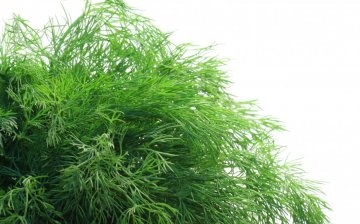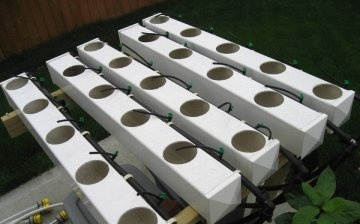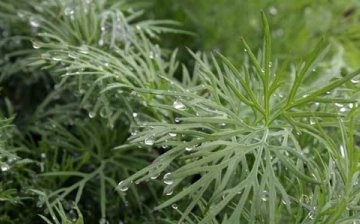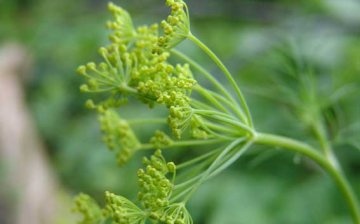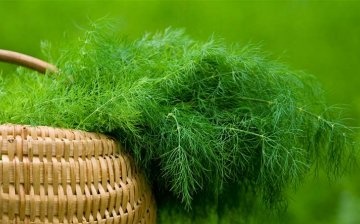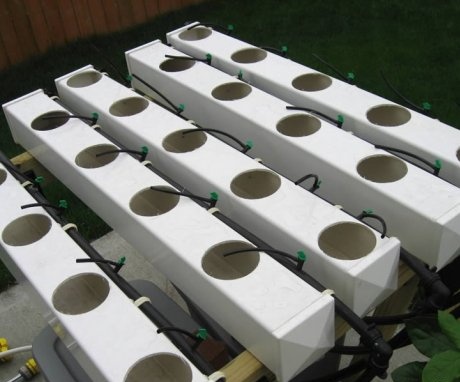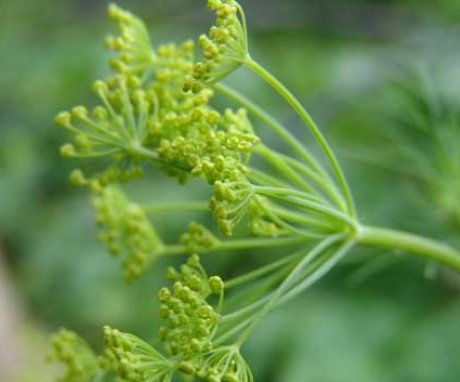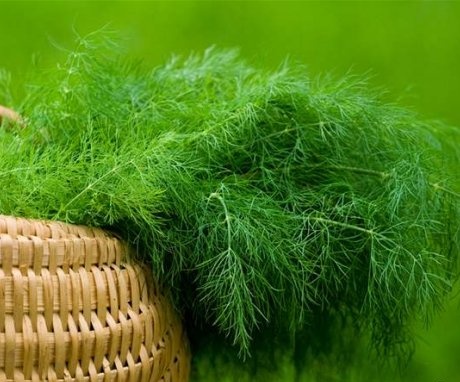Rules and benefits of growing dill hydroponically
Dill - one of the favorite horticultural crops, it is not only eaten fresh, but also serves as a seasoning and component of a variety of dishes. Growing dill hydroponically can be very profitable, but the costs are very low and will pay off quickly. The flow-through method of growing will allow you to get a large harvest in just a few weeks, and in the future, dill can be used both for your own consumption and for sale.
Content:
Dill Hydroponic Plant
Hydroponics - a system that does not require soil: the roots of plants are immersed in a nutrient solution, and all the necessary elements are obtained from it. Dill is one of the most unpretentious plants, it is practically not susceptible to diseases and pests.
It will not be difficult to provide him with suitable conditions, therefore, with obtaining harvest there will be no problems.
Dill is grown hydroponically as follows:
- The plant is based on square plastic pipes through which the nutrient solution will circulate. The number of pipes is limited only by the size of the room, the length is 2 meters, the width of the edge is 10 cm. To install the pots with plants, holes of the appropriate diameter must be cut in them.
- The ends of the pipes are closed with plugs, and holes must be cut in them for hoses through which the spent nutrient solution will be drained.
- The nutrient solution is placed in a large-volume container, a pipe with a pump is connected to it, from which hoses will supply it to the tubes with plants.
- A compressor must be installed in the system, which will enrich the solution with oxygen, like in an aquarium. In this case, the air bubbles should be small so that oxygen is freely delivered to the roots.
- A heating element is installed in the solution tank. The optimum temperature of the nutrient medium for fast growing is 24-28 degrees.
- The last part of the system is a timer that automatically turns on the pump and supplies the solution to the tubes. An automated system will not cause trouble, the owner will only need to control the growth of plants, cut off the shoots in time, and add nutrients to the solution.
You can install a hydroponic plant both in a greenhouse outdoors and indoors. However, if it is assembled in a room, sufficient artificial lighting must be provided.
Growing technology
For cultivation, you need to take small pots with large holes in the bottom, you can use pots for seedlings... They are filled with expanded clay, which is covered with a layer of vermiculite, after which seeds are placed in it. During germination, the nutrient solution is not yet required, it is enough to water the pots with plain water and cover with foil to get mini greenhouse.
After the shoots have appeared, the film is removed, and the pots with the shoots are placed in tubes with a nutrient solution.
The pump should automatically start up once an hour and run for 20 minutes, after which the rest of the solution will again go through the drain hoses into the container. This is enough for the root system to receive good nutrition, and the dill begins to grow rapidly.
The flow-through method is perfect for growing other types of herbs: parsley, basilica, coriander and others. However, it cannot be used for green onions: the bulbs quickly rot due to the increased amount of moisture, and it is impossible to get a green feather for a long time.
Optimal conditions
Seedlings usually appear on the 5th day, however, at first, young shoots will grow slowly: dill forms a root system in the first week, and only then the phase of active growth begins. It must be remembered that dill is a light-loving plant, so it needs a long daylight hours and open sun.
If you have to install artificial lighting, fluorescent lamps with a power of at least 20 watts are suitable.
There are other important conditions for growing dill:
- It is advisable to choose bushy varieties with late flowering. They later give umbrellas, and it will be possible to collect several times harvest green shoots. However, lighting is very important: if the daylight hours are short, the plant will begin to bloom too early.
- For cultivation, you can purchase special complex fertilizersdesigned specifically for hydroponic installations. It is difficult for a novice home gardener to immediately build an optimal balance of nutrients, so plants may die from too abundant feeding... The main disadvantage of hydroponics is that all processes are fast, and you may not have time to save the plants.
- Several plants can be planted in one pot at once: the strongest of them will quickly take over the space, and it will be possible to cut it off first. After that, the rest will take its place and will soon grow to the required size.
- If the sprouts have become too long and thin, this is a signal that they do not have enough light. Lamps need to be lowered lower, they can be 10-15 cm from your garden.
- When harvesting, it is undesirable to completely "strip" one plant: it is better to cut off large branches from different bushes. If the plant has given umbrellas, it can be completely removed and used for food, and a new sprout can be planted in its place.
- When using ready-made fertilizer complexes with a high nitrogen content, the plants begin to rise very quickly. Fully ripe dill, suitable for sale or other use, can be obtained in just 20-30 days. Having worked out the technology, you can create a full-fledged enterprise and look for various distribution channels.
Growing benefits
The hydroponic plant can rightfully be called the technology of the future. Today, in one form or another, they are used in growing plants around the world and make it possible to get a bountiful harvest in a very limited area. This method has several advantages at once:
- The ability to fully control top dressing and provide the roots with sufficient nutrients. In a hydroponic plant, nutrients are added to the solution according to a specific schedule, as a result, the plants grow green mass much faster.
- Plants will be more viable and protected from pests... Weeds will not appear in the installation, you will not need to waste time weeding. Because of this, there is no need to use pesticides and herbicides, and the grown products will be environmentally friendly.
- It is quite simple to assemble the unit, it does not require any expensive components and materials. Even a novice gardener can afford to purchase plastic pipes, a tank and hoses, and it will be easy to prepare a nutrient solution using a complex fertilizers.
- A hydroponic plant allows you to save space. In the greenhouse you can place a large number of pipes with plant pots, and if possible, arrange artificial lighting, they can be placed on several levels.
With all the advantages, there is no reason to reproach plants grown in this way for being unnatural: the plants live their natural cycle, and nothing interferes with the process. Only they receive nutrients not from the soil, but from a special solution with nitrogen fertilizer, while the roots will not rot, and your crop will not be eaten by any pests. The advantages of growing dill in hydroponics are obvious: the resulting green products will be tasty and safe, so hydroponics can become a source of not only useful products for the family, but also possible income in the future.
More information can be found in the video.



